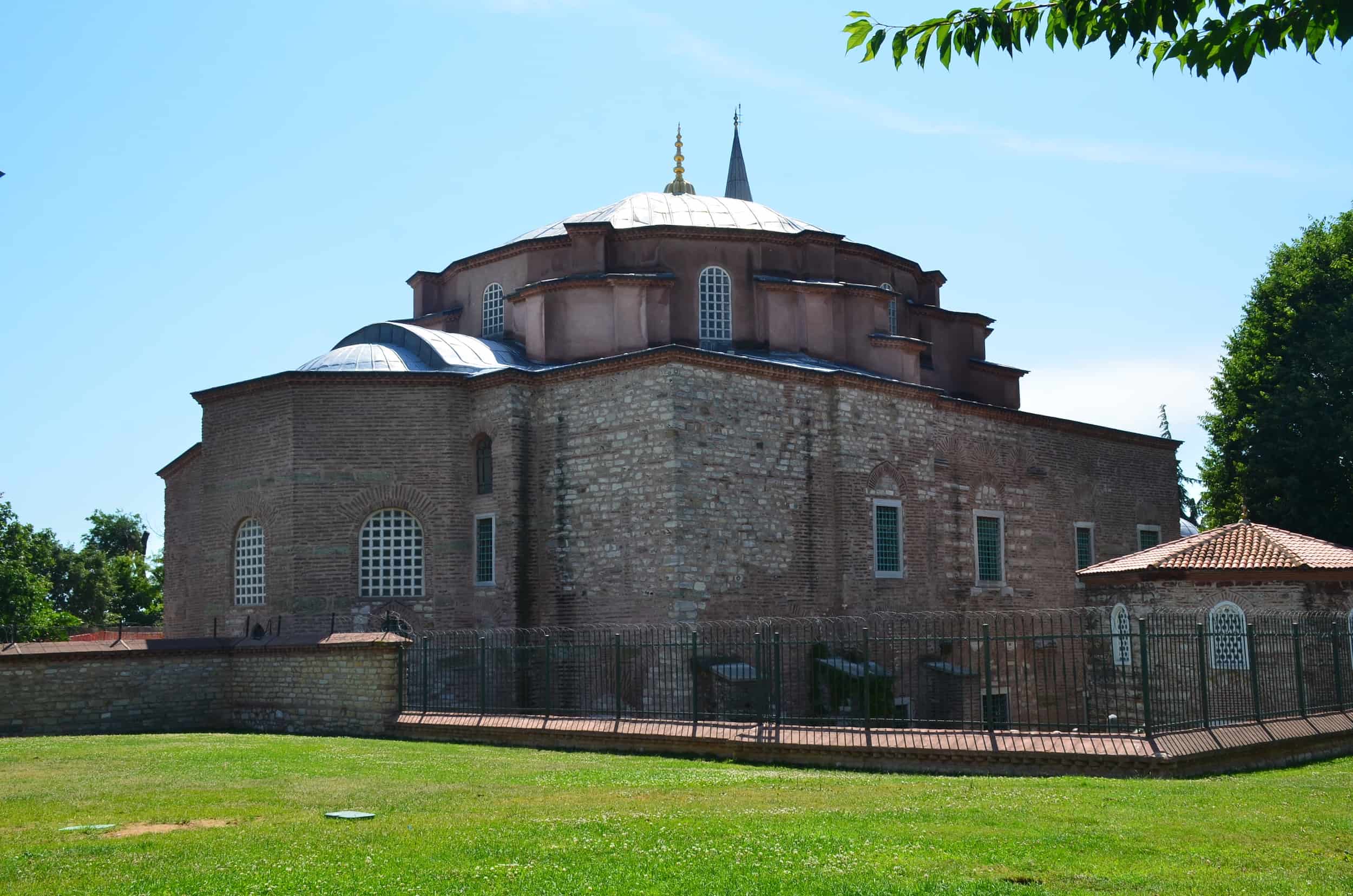Last updated on .
The Little Hagia Sophia Mosque (Küçük Ayasofya Camii) is one of my favorite mosques in Istanbul. It’s located in the Küçük Ayasofya neighborhood near Kadırga, a short walk from both the Sultanahmet area and the Sokollu Mehmed Pasha Mosque.

First of all, this mosque is a hidden gem. It sits in the backstreets off the beaten path, meaning you can often explore it without any crowds. Secondly, the rich history of the mosque makes it worth going out of the way to find. Thirdly, the structure is included in the UNESCO World Heritage listing of the Historic Areas of Istanbul.
History
The Little Hagia Sophia Mosque was originally the Church of SS Sergius and Bacchus (Ἐκκλησία τῶν Ἁγίων Σεργίου καὶ Βάκχου ἐν τοῖς Ὁρμίσδου). It was built between 527 and 536 by Justinian I and shared a narthex and atrium with another Byzantine church, SS Peter and Paul. Although the architectural design is different, the Church of SS Sergius and Bacchus may have been used as a model for Hagia Sophia.
After the Fall of Constantinople, the church remained in the hands of the Orthodox community until the reign of Bayezid II. Sometime between 1506 and 1512, it was converted into a mosque by Kesikbaş Hüseyin Ağa, the Chief Black Eunuch of Topkapi Palace. A portico and madrasa were added to the church. The building later served as a model for the Rüstem Pasha Mosque in Eminönü, built by Mimar Sinan (1490-1588).
The mosque was restored by Grand Vizier Nişancı Ahmed Pasha (d. 1753) in 1740. A minaret was added in 1762, but it was demolished in 1940 and rebuilt in 1956. The Sirkeci railway line constructed south of the building in 1870 caused significant damage and required the demolition of SS Peter and Paul.
Prayer Hall
The prayer hall of the mosque contains a two-story colonnade running along three sides. The columns are made of verd antique and red Synnada marble.
There are 16 columns on the lower level and 18 on the upper level. Many of the column capitals still contain the monogram of Justinian and Empress Theodora.
An inscription in 12 Greek hexameters dedicated to Justinian, Theodora, and Saint Sergius runs along the colonnade. It’s perhaps the most impressive element of the building remaining from Byzantine times.
The walls were once covered with mosaics and marble but were plastered over after the building’s conversion into a mosque. A few original Byzantine bricks remain uncovered and behind glass.
The umbrella-style dome contains 16 compartments. Eight flat sections alternate with eight concave ones. It’s supported by eight pillars.
It’s possible to visit the upper level, which is highly recommended. The staircase is to the right of the entrance through an original Byzantine marble gate.
Once upstairs, you can get unique views of the minbar, mihrab, and architectural elements of the building. There’s also a well upstairs which I didn’t expect to see.
Cemetery
On the north side of the church, there’s a small Ottoman cemetery with an exhibition of Ottoman headstones. There’s also the tomb of Kesikbaş Hüseyin Ağa, who was executed in 1512.